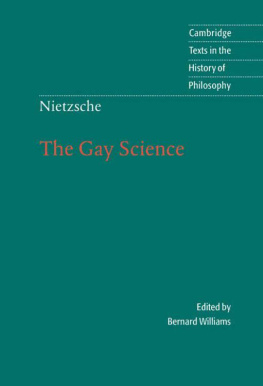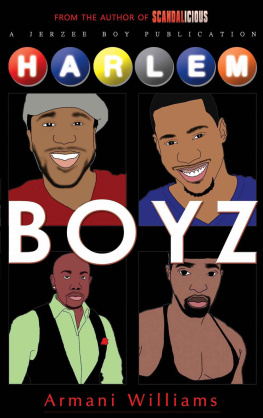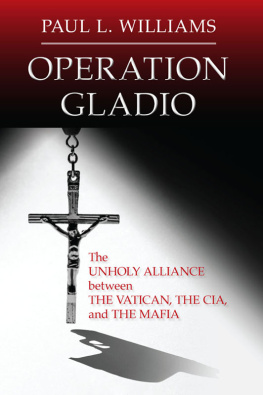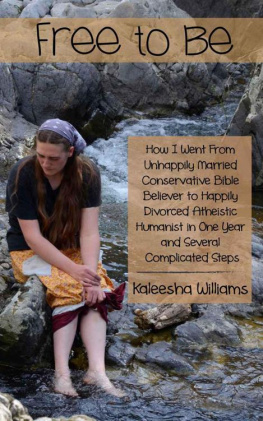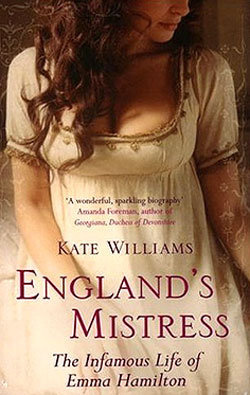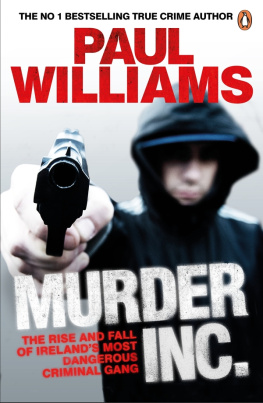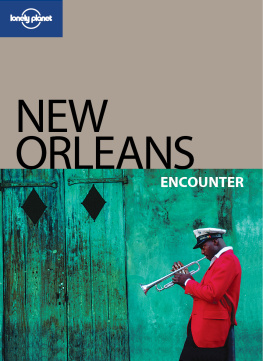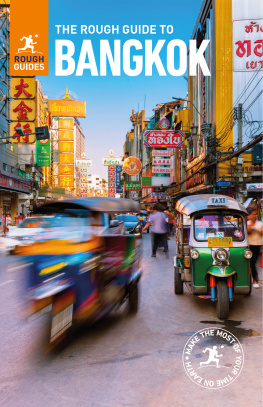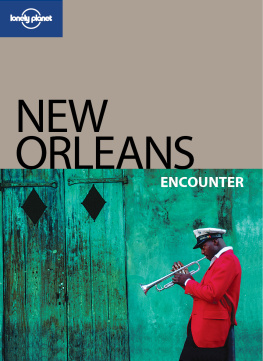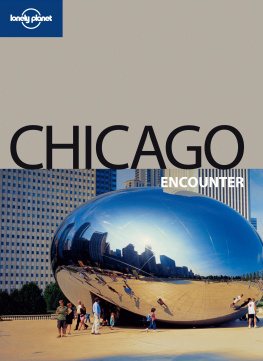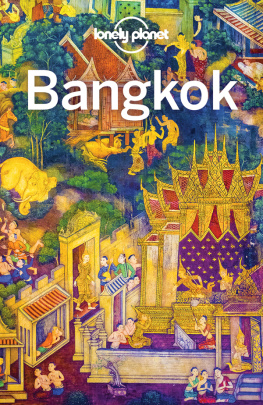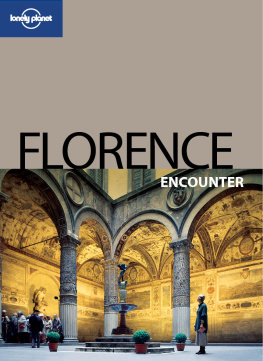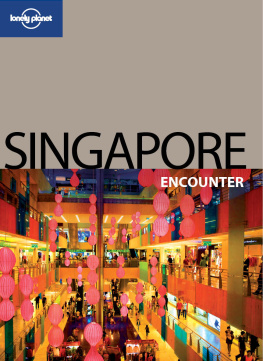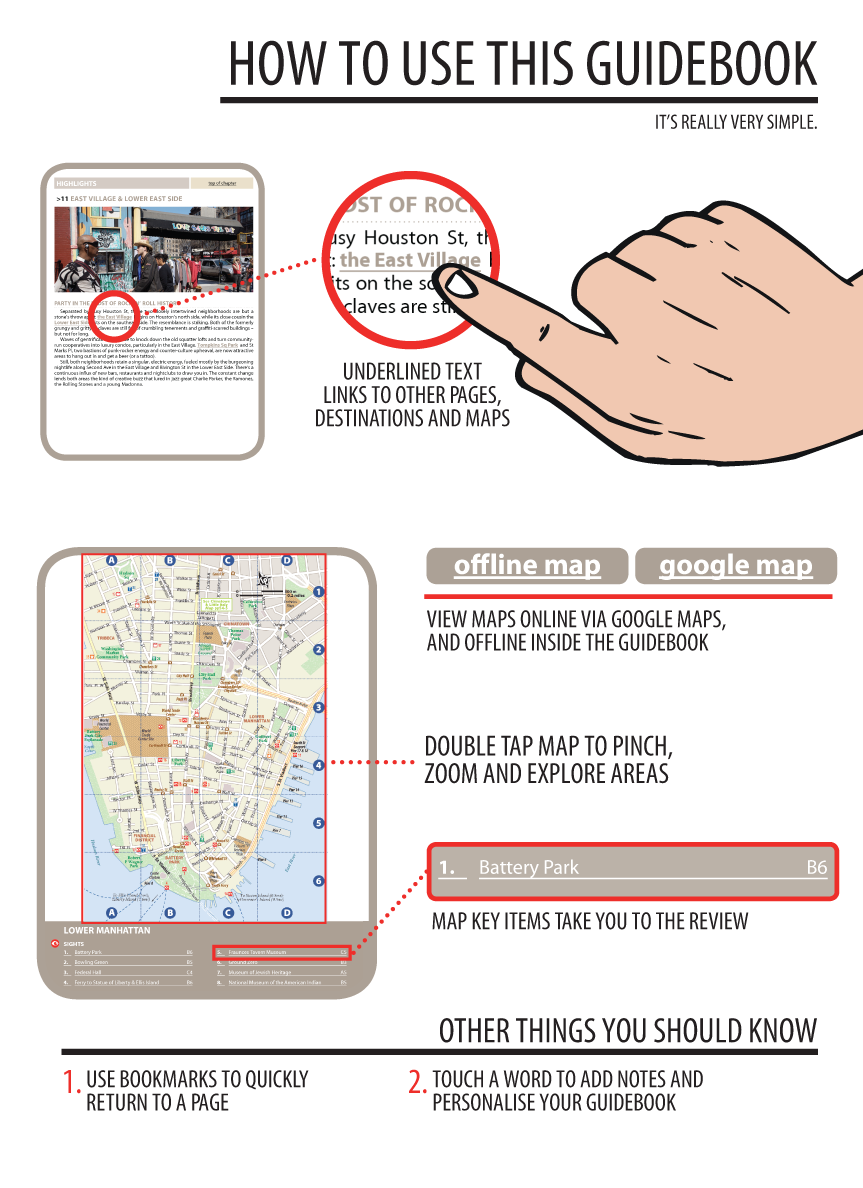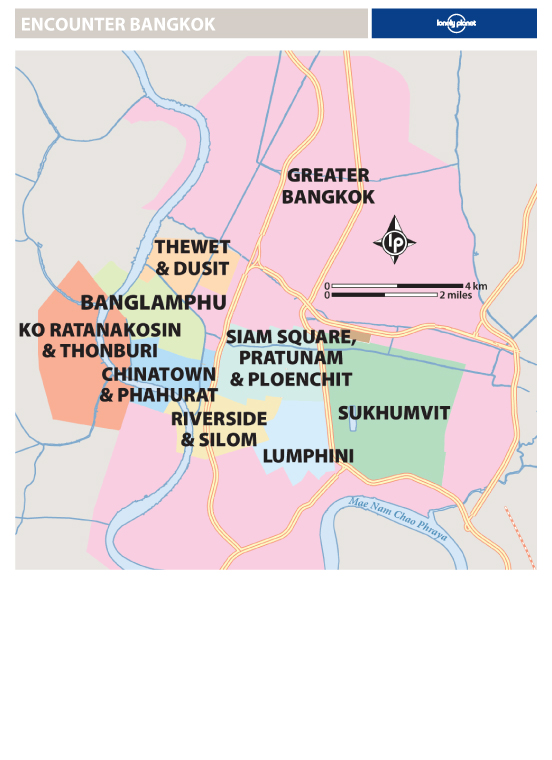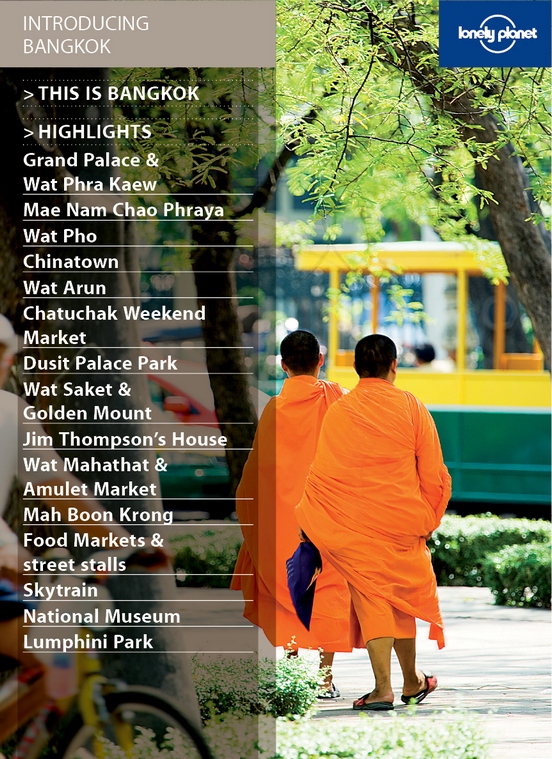This is Bangkok
Bangkok is excess in all of its unrestrained glory. Bigger, better, more: the city is insatiable, a monster that feeds on concrete, shopping malls and diesel exhaust.
The city demands that you be in the present and in the moment, not necessarily for a religious epiphany, but because the city is self-absorbed and superficial, blissfully free of wrinkle-inducing self-reflection. Smiles and sanuk (the Thai word for fun) are the key passports into Bangkok society. A compliment here, a joke there the demands of social lubrication in this megalopolis are more akin to a small village than an anonymous city and a necessity for survival.
As Bangkok forcefully kneads out of you all demands for order and predictability, youll understand the famous Thai smile. It is the metaphorical brakes on the urban overdrive. Packed into these concrete corridors are religious spectacle, unapologetic consumerism and multi-flavoured hedonism corrupting and purifying souls within footsteps of each other. A tragicomic confluence of human desires and aspirations best viewed through a detached smile.
Of the famous and infamous attractions, Bangkoks best feature is its intermingling of opposites. A modern world of affluence orbits around a serene traditional core. Step outside the four-star hotels into a typical Siamese village where taxi drivers knock back energy drinks and upcountry transplants grill chicken on a streetside barbecue. Hop the Skytrain to the glitzy shopping malls where trust-fund babies examine luxury brands as carefully as the housewives inspect produce at the open-air markets. Or appreciate the attempts at enlightenment at the citys famous temples and doorstep shrines, or simple acts of kindness amid the urban bustle.
You can jump between all of these worlds wining and hobnobbing at a chic club, eating at a streetside market, getting plucked and pummelled into something more beautiful, or sweating profusely on a long unplanned march. Bangkok is an urban connoisseurs dream come true.
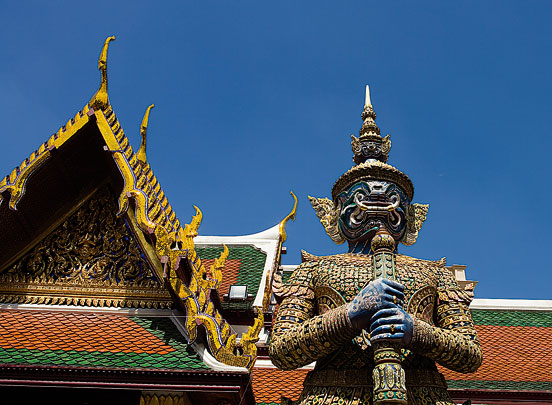
An imposing welcome at the entrance to the National Theatre, Ko Ratanakosin
GREG ELMS
>1 GRAND PALACE & WAT PHRA KAEW
Make a pilgrimage to Thailands Princely Buddha
is an elaborate and colourful temple that easily distracts first-time visitors from the namesake figure: the Emerald Buddha, a diminutive statue carved of nephrite (a type of jade, not emerald) housed in the main hall. This is one of the most revered of the Thai Buddhas, representing the legitimacy of the reigning dynasty and claiming a swashbucklers history. The dazzling figure was discovered in northern Thailand in the 15th century when a stupa was split open by lightning. To conceal its lustre the figure was covered in plaster (a common practise during the days of wars and bandits). Succeeding generations eventually forgot what the plaster hid inside until an accidental fall revealed the contents. In the mid-16th century, Laotian invaders stole the sacred Buddha but the Thais retrieved it in battle and used it to bestow divine approval on General Taksin who assumed the throne after the fall of Ayuthaya. The figure was placed in its present location during the reign of Rama I (King Buddha Yodfa; r 17821809), the first king in the Chakri dynasty, when the capital was moved across the river from Thonburi to Bangkok in 1782.
Because of its royal status, the Emerald Buddha is ceremoniously draped in monastic robes, which are changed every season (hot, wet, and cool) by the king himself.
Next door to Wat Phra Kaew is the . The primary buildings display a fusion of Thai and Western architectural styles and are occasionally used for official functions, but the formal grounds lack the vibrancy of the neighbouring temple.
A strict dress code is enforced at the temple; for guidelines and more information.
An Epic Challenge: The Ramakian
In the corners of Wat Phra Kaew are murals of the Ramakian story, the Thai version of the Indian epic Ramayana . The tale unfolds clockwise from the northern gate and each frame depicts the main event in the centre with the conclusion depicted either above or below.
The story begins with the hero, Rama (the green-faced character), and his bride Sita (the beautiful topless maiden). The young couple are banished to the forest, along with Ramas brother. In this pastoral setting, the evil king Ravana (the character with many arms and faces) disguises himself as a hermit in order to kidnap Sita.
Rama joins forces with Hanuman, the monkey king (logically depicted as the white monkey), to attack Ravana and rescue Sita. Although Rama has the pedigree, Hanuman is the unsung hero. He is loyal, fierce and clever. En route to the final fairytale ending, great battles and schemes of trickery ensue until Ravana is finally killed. After withstanding a loyalty test of fire, Sita and Rama are triumphantly reunited.
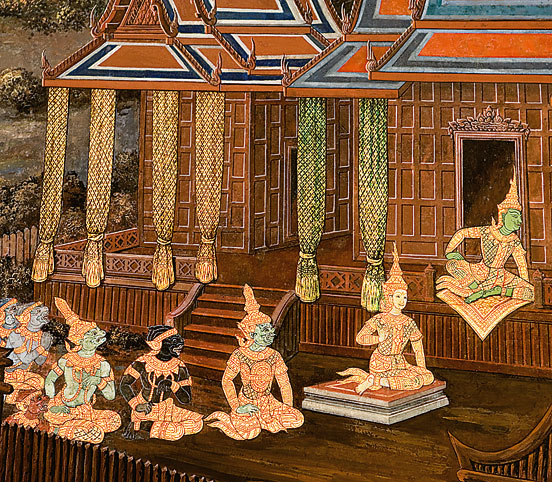
Detail of Ramayana mural, Wat Phra Kaew
GREG ELMS
>2 MAE NAM CHAO PHRAYA
Travel with the commoners along the river of kings
Central Thais are river people, building their homes, livelihoods and capitals along the waterways. One such artery is the Mae Nam Chao Phraya (literally the River of Kings), which starts in the mountains of northern Thailand, sweeps past the former capital of Ayuthaya and defines the western boundary of Bangkok before it reaches the Gulf of Thailand some 370km away from its source.
The river is always teeming with activity: hulking freighter boats trail behind dedicated tugs, elegant long-tail boats skip across the wake, and children practice cannonballs into the muddy water. The residents claiming a waterfront view range from world-class hotels to sweaty warehouses and auspicious temples. As evening sets in, cool river breezes mellow the harsh temperatures and the blinding sun slips into serene streaks of reds and golds. From this vantage point, sooty Bangkok suddenly looks beautiful.
The best way to explore the watery side of Bangkok is aboard the river express , which sprints from Wat Ratchasingkhon in the south of the city to Nonthaburi in the north. At docks along the way, the ferry discharges crowds of map-toting tourists, commuting office clerks and groups of monks. (The back of the starboardside is reserved for monks; women should opt for the portside.)
Start an upriver journey from Tha Sathon, accessible via the Skytrain Saphan Taksin station. On your right is the old farang (Westerner) quarter what we refer to as Riverside first inhabited by seafarers and multinational shipping companies. The Oriental Hotel and other neoclassical buildings are a few of the remaining memorials to this era when the water was the main thoroughfare.


